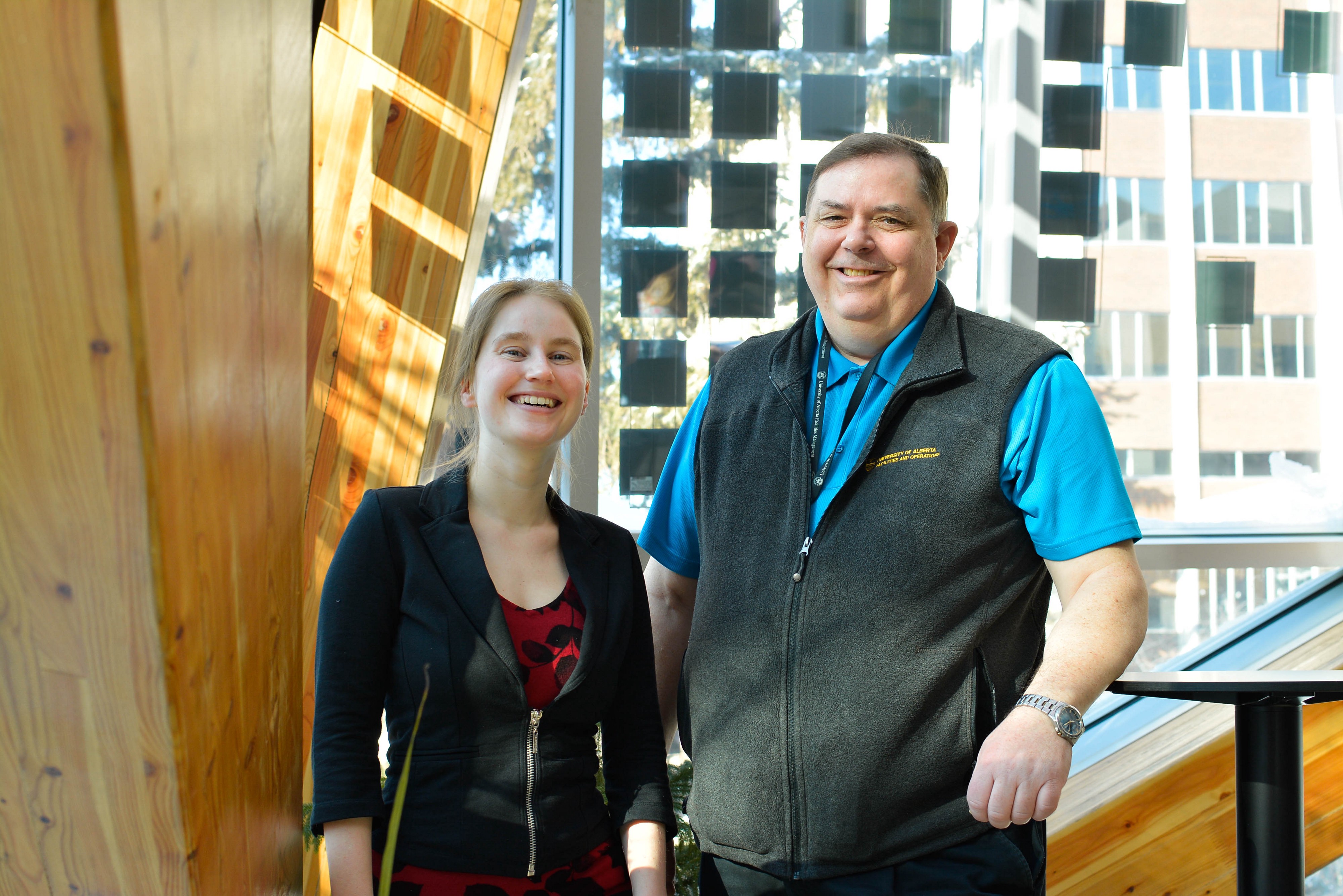
It's a problem that almost any academic can sympathize with: David Whalen couldn't get his project to fit the awards application.
The university's manager of buildings and grounds services was nominating the Edmonton Clinic Health Academy for a national TOBY Award (The Outstanding Building of the Year). But so many things didn't fit the application quite right.
The TOBY Awards were originally designed for office buildings, and Whalen was struggling to fit ECHA's coolest features - medical labs, robotics facilities, cutting-edge networking, efficient heating and cooling, several green roofs - into a staid, concrete box.
"That building is a technical dynamo!" says Whalen. "The degree of engineering required, you just don't have that in commercial buildings."
Since the project didn't fit the award application, maybe the award application should be changed to fit the project?
Fast forward several years to May 2016. With only 30 minutes' notice, Whalen was invited to speak with BOMA International's executive committee. They had been dealing with this very problem, and wanted the University of Alberta's help creating a new TOBY Awards category that would better fit universities, libraries, museums and other public buildings.
"I told them, 'I'll take it on for you. We'll put something together that just works,'" says Whalen. Sure enough, with Whalen's team's guidance, the new "public assembly buildings" category was successfully created within half a year.
And last week, their contributions earned the U of A a rare commendation from BOMA Edmonton. The Chair's Special Recognition Award recognizes the university's progressive leadership at the local, national and international levels.
A level of excellence that wasn't being recognized
You might think that creating an awards category tailored for universities is a particularly self-serving project. Many of the functions that the University of Alberta provides are energy-intensive, whether we're talking about manufacturing medical isotopes, operating a competition-sized swimming pool, or simply storing enough books for 40,000 students. A third of the points needed to win a TOBY Award are tied to energy and sustainability, so maybe these energy hogs just couldn't compete against office buildings?
Not so, says a key member of Whalen's team, Sascha Jansz. To her, many public assembly buildings are actually doing exceptional work to be energy-efficient, enough to beat many office buildings in the previous TOBY category. The problem is that this extra level of excellence wasn't being recognized.
"It's definitely not the case that we felt we were being wronged and that had to be fixed with this new category," says Jansz. "I expect it will be more difficult to win this category. We will be compared to buildings that are also outside of the box."
But being compared to other unique buildings is what Jansz feels will be truly valuable, both for the U of A and for green buildings in general. All of the awards nominees will be given prominent place at the BOMA International conference and expo, which attracts 15,000 people a year. It will facilitate discussion amongst universities (and anyone else who might have a theatre, gym, wet lab or nuclear reactor in their portfolio). It will make it much easier for universities to learn from similar challenges, and to spread green building innovations across the globe.
"Really the awards are just a way to showcase what's being done, and then allow other people to learn from that and simply let it spread like wildfire," says Jansz.
When the first international TOBY Award for public assembly buildings is given in 2018, Whalen and Jansz hope to be there. The application won't be open for a while longer, but they are considering nominating one of the university's marquee research buildings like the Centennial Centre for Interdisciplinary Science or the Donadeo Innovation Centre for Engineering.
"Now we can really showcase what we've got here," says Whalen.

Trevor Chow-Fraser, Program Lead (Marketing & Communications), Office of Sustainability
Trevor has worked in campus sustainability since his undergraduate days in Montreal. He joined the university in 2012 working for International Week and volunteering with CSJR Radio. Now with the Office of Sustainability, he contributes to one of the best sustainability engagement programs in the country.